#March 1942 - March 1945
Text
A Timeline of CATFA in images

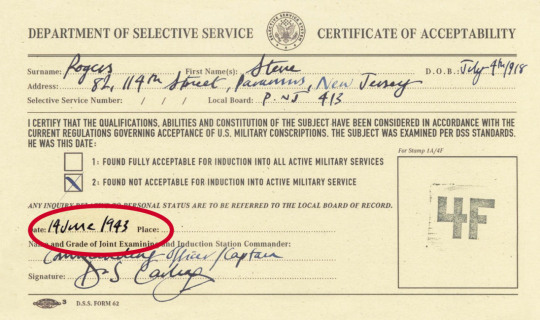


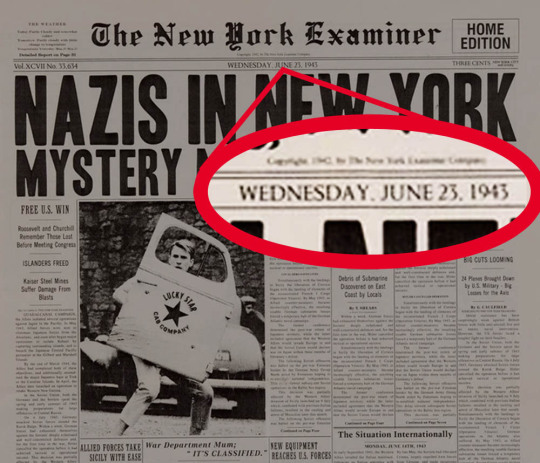
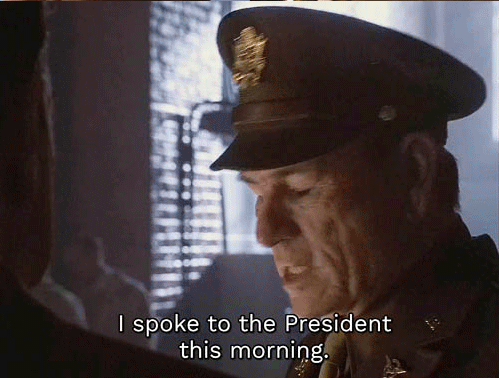



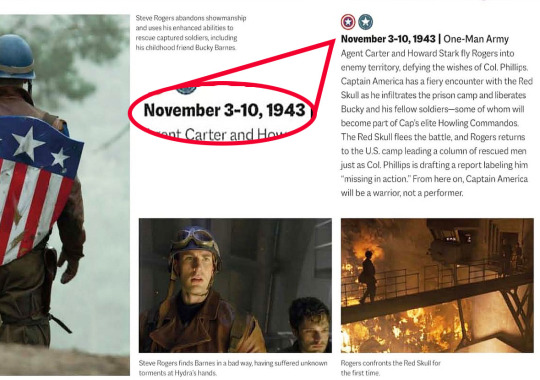
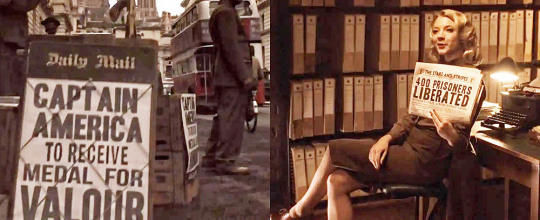
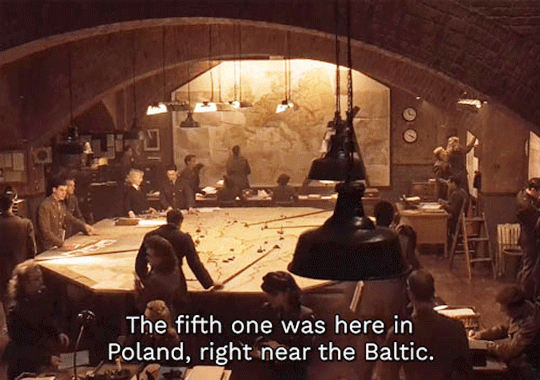

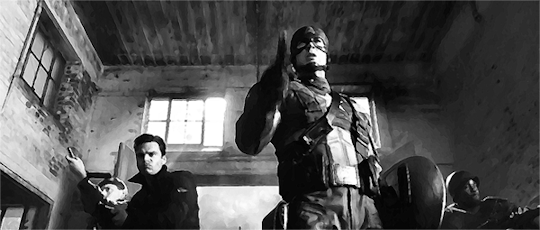

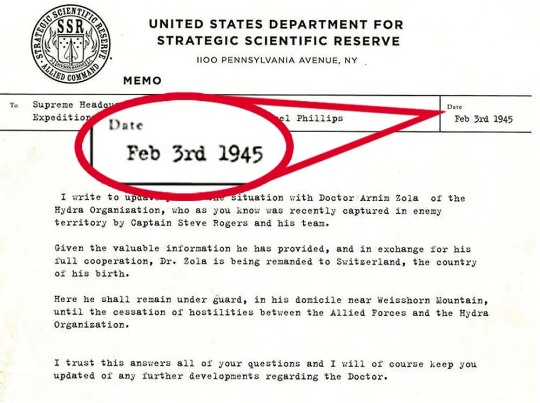

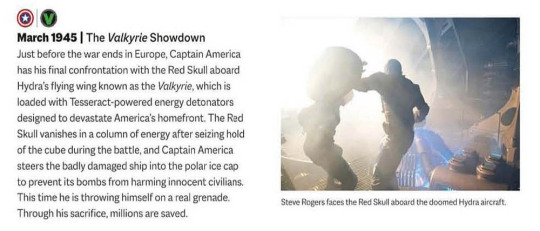





from this meta.
#timeline#March 1942 - March 1945#long post#historically accurate stucky tag#steve rogers#steve meta#catfa#mcu meta#catfa meta#ref#meta#626 days#dat's me#that '24 hours' deadline between phillips and gabe#sidenote: more hydra bases are shown on maps in SSR HQ#but only the 6 are linked to the howlies#and the 7th is the valkyrie base#meaning (if they only dealt with those 6 bases) steve and the howlies had 2.5 months to plan and execute each mission#steve was only in the european theatre of war for 1 year 3 months and 27 days (or 15 months and 27 days) 😥#5 days before bucky's birthday#😭#my meta
88 notes
·
View notes
Text

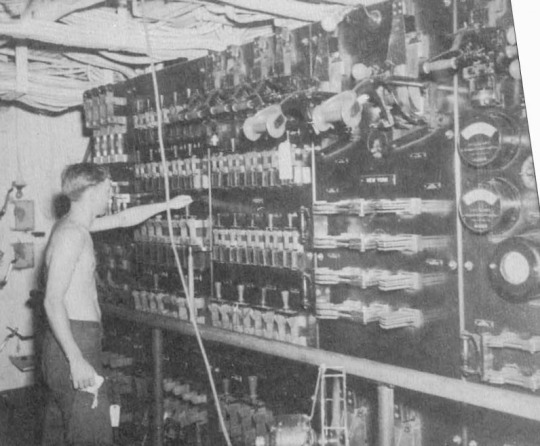
Electrical power is routed to all parts of USS NEW YORK (BB-34) from distribution boards.
The first photo was taken by Frank Scherschel of Life Magazine, sometime between March to June 1942. Identified by Peter DeForest.
Date: 1942-1945
LIFE Magazine Archives: 571039, 1155772543
United States Navy, "The history of the U.S.S. New York, BB-34" (1945). World War Regimental Histories. 162. https://digicom.bpl.lib.me.us/ww_reg_his/162
#USS New York (BB-34)#USS New York#new york class#dreadnought#battleship#March#June#1942#1945#World War II#World War two#World War 2#WWII#WW2#wwii history#history#united states navy#us navy#navy#usn#u.s. navy#my post
66 notes
·
View notes
Text
If you’re wanting to watch Band of Brothers/The Pacific/Masters of the Air in chronological order with BoB 1st Currahee episode split up in the dates on screen I made a list
(Updated: April 12, 2014 7:58pm pst)
July, 10 1942 Easy Company Trains in Camp Tocca (Band of Brothers Ep. 1 Currahee 2001)
August 7, 1942, Allied forces land on Guadalcanal (The Pacific Ep. 1 Guadalcanal/Leckie 2010)
September 18, 1942, 7th Marines Land on Guadalcanal (The Pacific Ep. 2 Basilone 2010)
December 1942 The 1st Marine Division on Guadalcanal is relieved (The Pacific Ep. 3 Melbourne 2010)
*June 23, 1943, Easy Company Trains in Camp Mackall N.C. (Band of Brothers Ep. 1 Currahee) *
June 25, 1943, 100th Bomb Group flew its first 8th Air Force combat mission (Master of the Air Ep. 1 2024)
July 16, 1943 the 100th Bomb Group bombed U-Boats in Tronbhdim (Masters of the Air Ep.2 2024)
August 17, 1943 the 4th Bomb Wing of the 100th Bomb Group bombed Regenberg (Masters of the Air Ep. 3 2024)
*September 6, 1943, Easy Company Boards transport ship in Brooklyn Naval Yard (Band of Brothers Ep. 1 Currahee)*
September 16, 1943, William Quinn and Charles Bailey leave Belgium (Masters of the Air Ep.4 2024)
September 18, 1943
-*East Company trains in Aldbourne, England (Band of Brothers Ep. 1 Currahee)*
-John 'Bucky' Egan returns from leave to join the mission to bomb Munster (Master of the Air Ep.5 2024)
October 14, 1943, John ‘Bucky’ Egan interrogated at Dulag Lut, Frankfurt Germany (Masters of the Air Ep. 6 2024)
December 26, 1943, 1st Marine Division lands on Cape Gloucester (The Pacific Ep. 4 Gloucester/Pavuvu/Banika 2010)
March 7, 1944, Stalag Luft III Sagan, Germany, Germans find the concealed radio Bucky was using to learn news of the War (Master of the Air Ep.7 2024)
*June 4, 1944, D-Day Invasion postponed (Band of Brothers Ep. 1 Currahee)*
*June 5, 1944 Easy Company Boards air transport planes bound for Normandy (Band of Brothers Ep. 1 Currahee)*
June 6, 1944, 00:48 & 01:40 First airborne troops begin to land on Normandy (Band of Brothers Ep. 2 Day of Days 2001)
June, 7 1944 Easy Company Takes Carentan (Band of Brothers 3x10 Carentan)
August 12, 1944, The 332nd Fighter Group attack Radar stations in Southern France (Masters of the Air Ep.8 2024)
September 15, 1944 U.S. Marines landed on Peleliu at 08:32, on September 15, 1944 (the Pacific Part Five: Peleliu Landing)
September 16, 1944 Marines take Peleliu airfield (the Pacific Part Six: Airfield)
September, 17 1944 Operation Market Garden -(Band of Brothers 4x10 Replacements)
October 22/23, 1944, 2100 – 0200 Operation Pegasus (Band of Brothers 5x10 Crossroads)
October, 1944 Battle of Peleliu continues (the Pacific Part Seven: Peleliu Hills)
December 16, 1944 Battle of the Bulge (Band of Brothers 6x10 Bastogne)
January, 1945 Battle of Foy (Band of Brothers 7x10 The Breaking Point)
February 14, 1945 David Webb rejoins the 506th in Haguenau (Band of Brothers 8x10 The Last Patrol)
April 5, 1945 506th Finds abandoned Concentration Camp
(Band of Brothers 9x10 Why We Fight 2001)
April 1-June 22, 1945 Battle of Okinawa (The Pacific Part Nine: Okinawa)
May 7, 1945, Germany Surrenders V-E Day
- (Master of the Air Ep. 9 2024)
- (Band of Brothers 10x10 Points 2001)
August 15 The Empire of Japan surrenders end of the War (The Pacific Part Ten: Home)
217 notes
·
View notes
Text

JACK DANIELS HOLSCLAW (1918-1998)
Tuskegee Airman Jack Daniels Holsclaw was born in Spokane, Washington, on March 21, 1918. His father, Charles, was a clerk in a downtown store, and his mother, Nell, was a manager at Pacific Telephone and Telegraph. Holsclaw attended North Central High School in Spokane, where he excelled both academically and athletically. When he was 15, he became the first black person in Spokane to earn the Eagle Scout badge.
Holsclaw entered Whitworth College in 1935 but transferred to Washington State College (now Washington State University) in 1936 to play baseball. Beginning in his junior year, he played center field and helped the Cougars finish as co-champions of the Northern Division, Pacific Coast Conference. He was the second African American earn a varsity letter in baseball at the college.
In 1939, Holsclaw transferred to a chiropractic program at Western States College in Portland, Oregon, where he met his wife, Bernice Williams. They had one son, Glen. Holsclaw completed the chiropractic program in 1942 and passed the Oregon state board examination.
While there, he enrolled in a government sponsored Civilian Pilot Training Program at Multnomah College and earned his pilot’s license. On October 5, 1942, he enlisted in the army as a private and entered flight school, training at Tuskegee Army Airfield, Alabama. After completing his training, he received his wings and was commissioned as a 2nd Lieutenant on July 28, 1943. Lieutenant Holsclaw received advanced training at Selfridge Field near Detroit, Michigan before his squadron was shipped to Italy in December 1943.
Lieutenant Holsclaw flew in the 100th Fighter Squadron, 332d Fighter Group, an all-black pursuit squadron. Holsclaw named his favorite P-51 “Bernice Baby” in honor of his wife. The 332d Fighter Group had distinctive red tails giving them the nickname “Red Tails.” The 332d Fighter Group escorted bombers on their runs over enemy territory, shielding them from German fighters. To the bomber crews that were protected by them they were the “Red Tail Angels.”
On July 18, 1944, in an aerial battle over Italy, Holsclaw shot down two German fighters. For this action he received the Distinguished Flying Cross. By December 1944, Holsclaw had completed 68 combat missions, nearing the limit of 70, when he became Assistant Operations Officer, an important administrative position that included aerial mission planning. In January 1945, Holsclaw was promoted to captain.
Captain Holsclaw returned to the United States in June 1945 to serve as assistant base operations officer at Godman Field, Fort Knox, Kentucky. He served as an Air Force ROTC instructor at Tuskegee Institute and then Tennessee State College.
From 1954 to 1957, Holsclaw was assigned to Japan, and from May 1962 to the end of 1964, he served as chief of the training division, Sixth Air Force Reserve Region at Hamilton Air Force Base, California. He directed the preparation of two textbooks to guide incoming air force personnel. Holsclaw retired from the Air Force on December 31, 1964 as a Lieutenant Colonel.
From 1965 to 1973 Holsclaw served as a manager in the Marin County Housing Authority, California. In 1973, he and Bernice returned to Washington where Holsclaw joined the staff at the People’s National Bank in Bellevue. He remained there until his second retirement in 1983. He and Bernice took up residence in Arizona, where Jack Holsclaw died on April 7, 1998, at the age of 80.
In August 2019, the Jonas Babcock Chapter, NSDAR, dedicated a historical marker in the memory of Lt. Col. Holsclaw at the site of his childhood home in Spokane.
144 notes
·
View notes
Text
Albert Speer

These are some facts and curiosities about Albert Speer, the Fuhrer's architect:
He was born in March 19, 1905.
He spent his youth in the Schloss-Wolfsbrunnenweg, the luxurious family home in Heidelberg, and cultivated a wide range of interests, including skiing, mountain excursions, rugby and, above all, mathematics, a discipline towards which he had a fervent passion.
However, due to his father's opposition, Speer ultimately chose to follow in his uncle's footsteps and study to become an architect.
After studying at the University of Karlsruhe, he moved to Munich, where he studied at the Berlin Institute of Technology, under the guidance of the famous architect Heinrich Tessenow.
During his university years Speer never adhered to any specific faith or political opinion.
This substantial "apoliticality" ceased during his discipleship at Tessenow, when Albert was persuaded by some of his students to participate in a Nazi party demonstration
Speer came into contact with Hitler in 1933 through the intercession of Rudolf Hess, by whom the architect was commissioned to design the apparatus for the Nuremberg rally that year.
Despite some initial doubts, the project met with the sympathy of the Führer and, above all, of Joseph Goebbels, who asked him to renew the Ministry of Propaganda.
An immediate understanding was established between Speer and Hitler: the Führer, in fact, was looking for a young architect capable of giving life to his architectural ambitions for a new Germany and therefore immediately included Speer in his closest circles.
Upon Troost's death in 1934, Speer was chosen by Hitler to replace him as chief architect of the Party.
In 1942, after the death of Fritz Todt (which occurred in a mysterious plane crash), Hitler surprisingly appointed Speer, who had no experience in industrial production, "Minister for Armaments and War Production".
In 1945 Speer refused to carry out the "scorched earth" strategy (established by the Nero decree), which aimed to completely destroy everything in German territories that would fall into enemy hands.
He was a great friend of Karl Brandt (one of the major exponents of Aktion T4) and they acted to save each other's lives: in 1944 Brandt used his powers as General Commissioner of Medical Services and his friendships to save Speer , already ill, from the assassination attempt plotted by Himmler. In 1945 Speer saved Brandt from the death sentence for ''treason''.
Speer was arrested by Allied forces in Flensburg immediately after the end of the conflict, and tried in Nuremberg on charges of using slave labor to run the German war industry.
He was sentenced to twenty years' imprisonment, to be served in Spandau prison in West Berlin.
Prison and solitary confinement provided Speer with the opportunity to write his memoirs, which made him an international celebrity and a very wealthy man.
He died on September 1, 1981, in London.
Some documents discovered after Speer's death prove, without a shadow of a doubt, that as early as 1943 Speer was aware of what really happened in Auschwitz.
Sources:
Wikipedia: Albert Speer
The Nazi Doctors by Robert Jay Lifton ( for the part of Brandt )
Hitler and his loyalists by Paul Roland
I DON'T SUPPORT NAZISM, FASCISM OR ZIONISM IN ANY WAY, THIS IS AN EDUCATIONAL POST
55 notes
·
View notes
Text

On this day in 1942, the Tuskegee Airmen became the first African American flying unit in the U.S. military and fought in World War II.
The Tuskegee Airmen epitomized courage and heroism.
The first unit, the 99th Pursuit Squadron, was activated at Chanute Field in Rantoul, Illinois on March 19, 1941, nine months before the United States officially entered World War II.
—Over the past seven decades the exploits of the Tuskegee Airmen have been celebrated, occasionally mythologized, and used as a recent reminder of the patriotism and heroism of African Americans in times of national crisis. Mounting pressure by black leaders such as union activist A Philip Randolph, NAACP chief executive Walter F. White, First Lady Eleanor Roosevelt and the black press to increase their presence in all branches of military service eventually persuaded a reluctant War Department to allow for the training of blacks as fighter pilots (initially no training for bomber crews) at an isolated field at Tuskegee Institute in Alabama, thus preempting contact with white trainees.
The legal authority to form a black combat flying unit sprang from Public Law 18, enacted in 1939, which directed the Civil Aviation Authority (CAA) to allow for the establishment of training programs for “Negro pilots” at designated locations, most notably Tuskegee Institute (now Tuskegee University) and a revised Selective Service Act in 1940 that effectively ended discrimination in the recruiting of men for the armed forces. Despite the strictures of brutal and demeaning segregation in the nation’s military and the actions of a few of its white commanders to retard their efforts, 992 African American flight cadets completed the Army Air Corps course between July 19, 1941 and the end of World War II including many who had originally been assigned to the old Buffalo Soldier units, the 9th and 10th cavalries and the 24th and 25th infantries. Also, because they were a segregated unit, supporting personnel who were black–bombardiers, navigators, mechanics, and instructors—also had to be trained and they too are considered Tuskegee Airmen who kept the pilots aloft.
Graduation of the first five pilots who received their wings took place on March 7, 1942, at the Tuskegee Army Air Field. Roughly 450 men joined the 99th Pursuit Squadron, initially led by whites but later ably commanded by then Capt. Benjamin O. Davis, Jr. who also took charge of the all-black 477th Bombardment Group in 1945. The 99th and the 332nd Fighter Group saw action in North Africa and Italy where they distinguished themselves winning hundreds of decorations for skill and gallantry in combat. Flying P-39 Airacobras, Curtiss P-40 Warhawks, P-47 Thunderbolts and, lastly, P-51 Mustangs, among the feats of the fighter pilots who flew more than 15,000 sorties was the downing of more than 100 enemy aircraft in aerial combat including three of Germanys fearsome ME-262, the world’s first operational fighter jet; demolishing nearly 150 enemy planes on the ground; and ruining an Italian destroyer that had been converted to a German torpedo boat.
The Tuskegee Airmen were prized and respected in the Army Air Force for their success in closely protecting Allied bombers flying missions into Axis territories. Moreover, their outstanding performance served to bolster African American pride and facilitated the transition to an integrated military in the post-war years. Among the Tuskegee Airmen emerged a number of future leaders including Air Force four-star generals Benjamin O. Davis Jr. and Daniel “Chappie” James, Maj. Gen. Lucius Theus, Detroit Mayor Coleman Young, New York Borough President Percy Sutton, pioneering San Francisco physician Wendell Lipscomb, and sociologist Dr. Dempsey W. Morgan.
47 notes
·
View notes
Text
Band of Brothers Easy Company Sorted Between Surviving and Not Surviving WWII: Part 1 of 2
Hey all! Here is part 1 of my big BoB post!!! I still have some work to do on part 2 but I will try to have it up as soon as I can. I hope you all find this useful and also a little bit interesting. I had so much fun doing the research for it. 🙂❤️
Enjoy!!! xoxo
Died During the War:
Company Commanders:
First Lieutenant Thomas Meehan III
Born: July 8th, 1921 (Philadelphia, PA)
Enlisted: March 16th, 1941 (Philadelphia, PA)
Died: June 6th, 1944/ D-Day (Normandy, France)
Age at Death: 22 years old
Cause of Death: Plane shot down and crashed after being hit by German anti-aircraft fire.
• His remains were finally returned to the U.S. in 1952 and he is currently buried at the Jefferson Barracks National Cemetery just south of St. Louis, Missouri
Awards/Medals:
• Parachutists Badge (aka Jump Wings)
• Combat Infantry Badge
• American Campaign Medal
• Purple Heart
• European-African-Middle Eastern Campaign Medal (with 2 service stars)
• World War II Victory Medal
• French Liberation Medal
• Croix de guerre with palm
Wounded?: No (died before seeing any combat)
Family:
• Thomas Meehan II (Father)
• Marion Opp Meehan (Mother)
• Anne Shore (Wife)
• Barrie Meehan Meller (Daughter)
Non-commissioned Officers:
Sergeant Warren Harold "Skip" Muck
Born: January 31st, 1922 (Tonawanda, NY)
Enlisted: August 17th, 1942 (Buffalo, NY)
Died: January 10th, 1945 (Foy, Bastogne, Belgium)
Age at Death: 22 years old
Cause of Death: Killed when an artillery round hit his foxhole, shared with Alex Penkala, and exploded.
• Skip Muck is buried at the Luxembourg American Cemetery in Hamm, Luxembourg City, Luxembourg.
Awards/Medals:
• Parachutists Badge (aka Jump Wings) with 2 combat stars
• Combat Infantryman Badge
• Bronze Star
• Purple Heart
• Presidential Unit Citation (with one Oak Leaf Cluster)
• European-African-Middle Eastern Campaign Medal (with 3 service stars and arrow device)
• World War II Victory Medal
• Army of Occupation Medal
• Croix de guerre with palm
• French Liberation Medal
• Belgian World War II Service Medal
Fought:
• D-Day/Battle of Normandy (Normandy, France)
• Operation Market Garden (Einhoven, Holland)
• Battle of the Bulge (Ardennes Forrest, Bastogne, Belgium)
Wounded?: Never wounded until KIA in Bastogne
Family:
• Elmer Julius Muck Sr. (Father)
• Loretta M. Muck (Mother)
• Elmer J. Muck Jr. (Older Brother)
• Ruth Muck (Younger Sister)
• Faye Tanner (Fiancée)
Enlisted Men:
Corporal Donald B. "Hoob" Hoobler
Born: June 28th, 1922 (Manchester, OH)
Enlisted: July 22nd, 1942 (Fort Thomas, KY)
• Joined the Ohio National Guard on October 15th, 1940 and served until October 1941.
Died: January 3rd, 1945 (Bastogne, Belgium)
• Don Hoobler is buried at Manchester IOOF Cemetery with his father (d. 1941), mother (d. 1976), and brother George (d. 1932).
Age at Death: 22 years old
Cause of Death: After acquiring a German Luger and placing the gun in his pocket the gun discharged due to the pressure of the multiple layers of clothing he was wearing and severed the femoral artery in his right leg. He bled out and died before he was able to be transported to an aid station.
Awards/Medals:
• Parachutists Badge (aka Jump Wings)
• Combat Infantryman Badge
• Purple Heart
• American Defense Medal
• European Theater of Operations Ribbon
Fought:
• Battle of Normandy/D-Day (Normandy, France)
• Operation Market Garden (Einhoven, Holland)
• Battle of the Bulge (Ardennes Forrest, Bastogne, Belgium)
Wounded?: No. Not until his fatal non-combat related gunshot wound to his leg in Bastogne.
Family:
• Sergeant Ralph Brenton Hoobler (Father)
• Kathryn Phyllis [Carrigan] Hoobler (Mother)
• John R. Hoobler (Brother)
• George B. Hoobler (Brother)
• Mary Kathryn [Hoobler] Lane (Sister)
Private First Class Alex Mike Penkala Jr.
Born: August 30th, 1924 (Niles, Michigan)
Drafted: February 27th, 1942 (Toledo, OH)
Died: January 10th, 1945 (Foy, Bastogne, Belgium)
Age at Death: 20 years old
Cause of Death: Killed when an artillery round hit his foxhole, shared with Skip Muck, and exploded.
• Alex Penkala is buried at the Luxembourg American Cemetery in Hamm, Luxembourg City, Luxembourg.
Awards/Medals:
• Parachutists Badge (aka Jump Wings)
• Combat Infantryman Badge
• Purple Heart
• Bronze Star
• American Campaign Medal
• European-African-Middle Eastern Campaign Medal (with 3 service stars and arrowhead)
• World War Two Victory Medal
• Reconnaissance de la France Libérée
• Croix de guerre with palm
• Médaille commémorative de la Guerre
• Good Conduct Medal
Fought:
• Battle of Normandy/D-Day (Normandy, France)
• Operation Market Garden (Einhoven, Holland)
• Battle of the Bulge (Ardennes Forrest, Bastogne, Belgium)
Wounded?: Wounded by a mortar explosion in the arm in Bastogne.
Family: Alex Penkala's parents emigrated from Poland in 1906 and his father barely spoke English. All the Penkala children (including Alex) were fluent in Polish.
• Alexander Penkala Sr. (Father)
• Mary [Kinski] Penkala (Mother) *died in childbirth in 1927 delivering her 13th child
• Angela M. [Penkala] Sobczyk (Oldest Sister)
• Mary [Penkala] Setlak (2nd Oldest Sister)
• Helen E. [Penkala] Hawblitzel (3rd Oldest Sister)
• Matilda V. [Penkala] Budney (4th Oldest Sister)
• Genevieve A. [Penkala] Glujas (5th Oldest Sister)
• Edward F. Penkala (Oldest Brother)
• Clem J. Penkala (2nd Oldest Brother)
• Evelyn A. [Penkala] Tatay (6th Oldest Sister)
• Irene [Penkala] Lichatowich (7th Oldest Sister)
• Rose L. [Penkala] Kaczmarczyk (2nd Youngest Sister)
• Gertrude E. [Penkala] Picking (Youngest Sister)
• Sylvia (Girlfriend)
Survived the War:
Company Commanders:
Captain Herbert Maxwell Sobel
Born: January 26th, 1912 (Chicago, IL)
Enlisted: March, 7th 1941
Died: September 30th, 1987 (Waukegan, IL)
Age at Death: 75 years old
Cause of Death: Malnutrition
• In 1970 Sobal shot himself in the head in an attempted suicide. The bullet entered his temple and severed his optic nerve rendering him blind for the rest of his life.
• He died a Lieutenant Colonel; serving in both WWII & Korea
• Sobel was cremated after his death
• Sobel is buried at Montrose Cemetery-Crematorium in Chicago, IL
• No one attended his funeral
Awards/Medals:
• Parachutists Badge (aka Jump Wings)
• Combat Infantryman Badge
• Bronze Star Medal
• American Campaign Medal
• European-African-Middle Eastern Campaign Medal
• World War II Victory Medal
• Croix de guerre (France)
Fought:
• Battle of Normandy/D-Day (Normandy, France)
• Operation Market Garden (Einhoven, Holland)
• Battle of the Bulge (Ardennes Forrest, Bastogne, Belgium)
Wounded?: No
After the War: Worked as a credit manager for a telephone equipment company in Chicago.
• Sobel was born into a Jewish family, his wife was devoutly Catholic. This was a major problem for his family.
• Sobel and his wife divorced sometime in the late 1960s and he became estranged from his family shortly after.
Family:
• Max H. Sobel (Father)
• Dora Friedman (Mother)
• Julian Sobel (Brother)
• Maxine Sobel (Brother)
• Ruth Sobel (Sister)
• Rose Sobel (Wife)
• Michael Sobel (Son)
• Herbert Sobel Jr. (Son)
• Rick Sobel (Son)
• 1 daughter (died a few days after birth)
Major Richard Davis "Dick" Winters
Born: January 21st, 1918 (New Holland, PA)
Enlisted: August 25th, 1941 (place unknown)
Died: January 2nd, 2011 (Campbelltown, PA)
Age at Death: 92 years old
Cause of Death: Parkinson's disease
• Dick is buried at Bergstrasse Evangelical Lutheran Church, Ephrata Township, PA and was laid to rest on January 8th, 2011.
Awards/Medals:
• Parachutists Badge (with 2 Combat Stars)
• Combat Infantryman Badge
• Medal of the City of Einhoven
• Distinguish Service Cross [The second highest medal awarded by the US Military]
• Bronze Star with one Oak Leaf Cluster
• Purple Heart
• Presidential Unit Citation with one Oak Leaf Cluster
• American Defense Medal
• National Defense Medal
• European-African-Middle Eastern Campaign Medal
• World War II Victory Medal
• Army of Occupation Medal
• Croix de guerre with palm
• French Liberation Medal
• War Cross (Belgium) with palm
• Belgian World War II Medal
Fought:
• Battle of Normandy/D-Day (Normandy, France)
• Operation Market Garden (Einhoven, Holland)
• Battle of the Bulge (Ardennes Forrest, Bastogne, Belgium)
• Western Allied invasion of Germany
Wounded?: Took a ricochet sniper bullet to the leg in Carentan.
After the War: Became a production assistant at Nixon Nitration Works, a plastics adhesive factory, in Raritan, NJ
Family:
• Richard Winters (Father)
• Edith Winters (Mother)
• Beatrice Winters (Sister)
• Ann Sheehan (Younger Sister)
• Ethel Estoppey Winters (Wife)
• Richard T. Winters (Son)
• Jill Peckelun (Daughter)
First Lieutenant Frederick Theodore "Moose" Heyliger
Born: June 23rd, 1916 (Acton, MA)
Enlisted: November 25th, 1940
Died: November 3rd, 2001 (Concord, MA)
• Moose is buried in Sleepy Hollow Cemetery
Age at Death: 85 years old
Cause of Death: Stroke
Awards/Medals:
• Parachutists Badge (aka Jump Wings)
• Bronze Star
• Purple Heart
• American Campaign Medal
• European-African-Middle Eastern Campaign Medal
• Military Cross
Fought:
• Battle of Normandy/D-Day (Normandy, France)
• Operation Market Garden (Einhoven, Holland)
Wounded?: Was accidentally shot by one of his own men (a replacement) on October 31st, 1944. His wounds caused him to need to undergo skin and nerve grafts. He was discharged from the army in February 1947 after being in military hospitals for nearly 3 years.
After the War: Worked as a salesman for landscape and agriculture chemical companies.
Family:
• Theodore Godet Heyliger (Father)
• Bertha Louise Heyliger (Mother)
• Johannes Almon Heyliger (Older Brother)
• Pauline Louise Heyliger (Older Sister)
• Howard Francis Heyliger (2nd Oldest Brother)
• Vic Heyliger (Younger Brother)
• Evelyn Davis (First Wife) [divorced early 1960s]
• Frederick Heyliger Jr. (Son)
• Diane Heyliger (Daughter)
• Mary Heyliger (Second Wife)
• Jon Heyliger (Son)
First Lieutenant Norman Staunton "Foxhole Norman" Dike Jr.
Born: May 19th, 1918 (Brooklyn, NY)
Enlisted: January 22nd, 1942
Died: June 23rd, 1989 (Rolle, Switzerland)
• Dike is buried at West Thompson Cemetery, Thompson Windham County, North Grosvenor Dale, Connecticut.
Age at Death: 71 years old
Cause of Death: "A long illness" is all the info I could find
Awards/Medals:
• Silver Star
• Bronze Star with Oak Leaf Cluster
• Purple Heart with Oak Leaf Cluster
• Order of Orange-Nassau Netherlands 2nd class
Fought:
• Operation Market Garden
• Battle of the Bulge
Wounded?: Shot in the right shoulder in Foy
After the War: Dike opened his own law practice in Switzerland
Family:
• Norman S. Dike Sr. (Father)
• Evelyn M. Biddle (Mother)
• Barbra Tredick Dimmick McIntire (Wife) (m. June 20th 1942 - divorced June 1946)
• Catherine Pochon (2nd Wife) (m. March 12th, 1957)
• Anthony Randolph Dike (Son)
• Robin Dike Auchincloss (Daughter)
• Barbra Matilda Dike (Daughter)
• Deborah Ann Dike (Daughter)
Captain Ronald Charles Speirs
Born: April 20th, 1920 (Edinburgh, United Kingdom)
Enlisted: April 11th 1942
Died: April 11th, 2007 (Saint Marie, Montana)
Age at Death: 86 years old
Cause of Death: Died suddenly; cause unknown
• Burial details unknown
Awards/Medals:
• Master Parachutist Badge with 4 combat jump devices (stars)
• Combat Infantry Badge 2nd Award
• Silver star
• Legion of Merit
• Bronze Star with 2 Oak Leaf Clusters
• Purple Heart with ne Oak Leaf Clusters
• Army Commendation Medal
• Presidential Unit Citation with one Oak Leaf Cluster
• American Campaign Medal
• European-African-Middle Eastern Campaign Medal with four Service Stars and Arrowhead Device
• World War II Victory Medal
• Army of Occupation Medal
• National Defense Service Medal with Service Star
• Korean Service Medal with four Service Stars and Arrowhead Device
• Croix de Guerre with palm
• French Liberation Medal
• Republic of Korea Presidential Unit Citation
• United Nations Korea Medal
• Korean War Service Medal
Fought:
• Battle of Normandy/DDay
• Operation Market Garden
• Battle of the Bulge
Wounded?: Wounded by fire from an enemy machine gun in Rendijk, Holland
After the War: After WWII Spiers stayed in the army for 22 years and served in both the Korean and Cold Wars. Once out of the army Speirs served as the Governor of Spandau Prison (where Nazi war criminals were held).
Family:
• Robert Spiers (Father)
• Martha McNeil (Mother)
• Margaret Griffiths (Wife) (m. May 20th, 1944 - 1946) * Divorced bc she was British and didnt't want to move to America with him.
• Leonie Gertrude Hume Fritz (2nd Wife) (m. 1958)
• Ramona Dolores Pujol Strumph (3rd Wife) (m. 1987)
• Robert (Son from 1st wife)
Junior Officers:
Captain Lewis Nixon
Born: September 30th, 1918 (New York, NY)
Enlisted: January 14th, 1941 (Trenton, NJ)
Died: January 11th, 1995 (Los Angeles, CA)
Age at Death: 76 years old
Cause of Death: Complications from diabetes
• Lew is buried at Forest Lawn Memorial Park in Hollywood Hills
Awards/Medals:
• Parachutist Badge (Jump Wings) with 3 combat stars
• Combat Infantyman Badge
• Purple Heart
• American Defense Medal
• European-African-Middle Eastern Campaign Ribbion with 3 Battle Stars and a Bronze Arrowhead
• World War Two Victory Medal
• World Was Two Army of Occupation Award with Germany Clasp
• French Criox de Guerre (Cross of Valor)
• Presidential Unit Citation with Bronze Oak Leaf
• 5 Overseas Service Stripes
• Ruptured Duck Patch (WWII Discharge Patch)
Fought:
• Battle of Normandy/DDay
• Operation Market Garden
• Battle of the Bulge
• Operation Varsity
Wounded?: In the Netherlands he was hit by a bullet from a German MG 42 machine gun. The bullet went through his helmet, grazed his forehead, and left a burn mark.
After the War: Nix worked at his family's Nixon Nitration Works in Edison, New Jersey alongside his father and friend Dick Winters.
Family:
• Stanhope Wood Nixon (father)
• Doris Ryer Nixon (mother)
• Fletcher Ryer Nixon (brother)
• Blanche Nixon (sister)
• Katharine Page (1st Wife) (m. December 20th, 1941 - 1944)
• Irene Miller (2nd Wife) (m. June 1946 - 1962)
• Grace Umezawa (3rd Wife) (m. 1962)
• Michael Nixon (Son with 1st Wife)
First Lieutenant Lynn Davis "Buck" Compton
Born: December 31st, 1921 (Los Angeles, CA)
Enlisted: Was already ROTC (started 1940) when the war broke out (graduated in 1943 and assigned to the 176th Infantry Regiment)
Died: February 25th, 2012 (Burlington, WA)
Age at Death: 90 years old
Cause of Death: Complications from a heart attack he had in January 2012
• Buck was cremated after his death and his ashes were given to his family
Awards/Medals:
• Parachutist Badge (Jump Wings) with 2 jump stars
• Combat Infantryman Badge
• Silver Star
• Bronze Star
• Purple Heart
• Presidential Unit Citation with one Oak Leaf Cluster
• American Defense Service Medal
• American Campaign Medal
• European-African-Middle Eastern Campaign Medal with arrow device (airborne assult) and 3 campaign stars
• World War II Victory Medal
• Army of Occupation Medal
• French Croix de guere with palm
• French Liberation Medal
Fought:
• Battle of Normandy/DDay
• Operation Market Garden
• Battle of the Bulge
Wounded?: In 1944, during Operation Market Garden, Buck was shot in the backside. Then, in January 1945, Buck suffered severe battle fatigue after witnessing two close friends (Joe Toye and Bill Guarnere) badly wounded by artillery fire.
After the War: He attended Loyola Law School in Los Angeles and joined the LA Police Department in 1946 becoming a detective in the Central Burglary Division. He left the LAPD for the District Attorney's office in 1951 as a deputy district attorney. He was promoted in 1964 to chief deputy district attorney. In 1970, Governor Ronald Reagan appointed him an Associate Justice of the California Court of Appeal. He retired in 1990.
• (Fun Fact/Before the War) Buck played as the catcher on his college baseball team his junior year. One of his teammates was Jackie Robinson. Also, Bucks mother worked on movies and Buck was present on set with his mother and met actor Charlie Chaplin. Buck, being a child at the time, was so rowdy and disruptive that Charlie Chaplin kicked him off set.
Family:
• Roby Franks Compton (Father)
• Ethel Camille Compton (Mother)
• Geraldine Compton (1st Wife)
• Donna Faye Newman Compton (2nd Wife)
• Tracy Compton (adopted daughter w/ 2nd wife)
• Syndee Compton (adopted daughter w/ 2nd wife)
#band of brothers#thomas meehan#skip muck#donald hoobler#alex penkala#herbert sobel#dick winters#moose heyliger#norman dike#ronald speirs#lewis nixon#buck compton#part 1#alyygx
31 notes
·
View notes
Text
Ruby Dandridge

Dorothy Dandridge was an American actress from the early 1900s through to the late 1950s. Dandridge is best known for her role on the radio show Amos 'n Andy, in which she played Sadie Blake and Harriet Crawford, and on radio's Judy Canova Show, in which she played Geranium.
Born Ruby Jean Butler in Wichita, Kansas, on March 3, 1900, she was one of four children. Dandridge's parents were Nellie Simon, a maid, and George Butler, who was a janitor, grocer and entertainer. Dandridge's father was also "a famous minstrel man."
On September 30, 1919, she married Cyril Dandridge. Dandridge moved with her husband to Cleveland, Ohio, where her daughter, actress Vivian Dandridge, was born in 1921. Her second daughter, Academy Award-nominated actress Dorothy Dandridge, was born there in 1922, five months after Ruby and Cyril divorced.
In 1937, Dandridge played one of the witches in what an article in The Pittsburgh Courier called a "sepia representation" of Macbeth in Los Angeles. California. The production began on July 8 at the Mayan Theater. Five years later, she appeared in a production of Hit the Deck at the Curran Theatre in San Francisco, California. One of Dandridge's earliest appearances, thought uncredited, was as a native dancer in King Kong in 1933. Dandridge was also in Junior Miss (1945), Tap Roots (1948), Three Little Girls in Blue (1946), Cabin in the Sky (1943), and Tish (1942). Lillian Randolph, Ernest Whitman, and Ruby Dandridge of the radio cast of The Beulah Show from 1952–1953.
In 1955, Dandridge and her business partner Dorothy Foster bought land in Twentynine Palms, California, with plans to construct a subdivision of 250 homes. Also in the 1950s, Dandridge formed a nightclub act that played in clubs around Los Angeles. A review of her act cited her "flashes of effervescent showmanship" and stated "What Ruby lacks in her voice, she invariably makes up for it with her winsome personality."
Dandridge attended her daughter Dorothy's funeral in 1965.
On October 17, 1987, Dandridge died of a heart attack at a nursing home in Los Angeles, California. She was interred next to Dorothy at Forest Lawn Memorial Park Cemetery in Glendale, California. In the 1999 film Introducing Dorothy Dandridge, Ruby is portrayed by Loretta Devine.

23 notes
·
View notes
Text
THIS DAY IN GAY HISTORY
based on: The White Crane Institute's 'Gay Wisdom', Gay Birthdays, Gay For Today, Famous GLBT, glbt-Gay Encylopedia, Today in Gay History, Wikipedia, and more … February 19




1902 – F.O. (Francis Otto) Matthiessen was an educator, scholar and literary critic influential in the fields of American literature and American studies. (d.1950) The exchange of letters between him and his lover Russell Cheney are among the most revealing gay male documents of the 1920s.
Born in Pasadena, California, after his parents' divorce in 1915, Matthiessen lived on his grandfather's farm in Illinois, later attended boarding school in Tarrytown, New York. Toward the end of World War I, joined the Canadian Air Force. He entered Yale in 1919, where he was a member of Skull and Bones society, and graduated in 1923 with many honors, and then became a Rhodes Scholar at Oxford, receiving a B. Litt. in 1925.
Matthiessen's best-known book, American Renaissance: Art and Expression in the Age of Emerson and Whitman (1941), discusses the flowering of literary culture in the middle of the American 19th century, with Emerson, Thoreau, Melville, Whitman and Nathaniel Hawthorne.
While sailing for Oxford, he met the painter Russell Cheney; they would be lovers until Cheney's death in 1945. Cheney, though closeted in many ways, was a profoundly positive influence on Matthiessen, encouraging his interest in gay and lesbian literary figures like Walt Whitman and Sarah Orne Jewett.
The couple shared a cottage in Kittery, Maine for decades. In planning to spend his life with Cheney, Matthiessen went as far as asking his cohort in the Yale secret society Skull and Bones to approve of their partnership. With Cheney having encouraged Matthiessen's interest in Whitman, it has been argued that American Renaissance was "the ultimate expression of Matthiessen's love for Cheney and a secret celebration of the gay artist."
Matthiessen, as a gay man in the 1930s and 1940s, chose to remain in the closet throughout his professional career, if not in his personal life - although traces of homoerotic concern are apparent in his writings. In 2009, a statement from Harvard University said that Matthiessen "stands out as an unusual example of a gay man who lived his sexuality as an 'open secret' in the mid-20th century."
After Cheney's death in 1945, Matthiessen was increasingly distraught; he committed suicide by jumping from a window in 1950. Because Matthiessen's politics were left-wing, socialist, though not dogmatically Marxist, inquiries by House Un-American Activities Committee into his politics may also have been a factor in his suicide: writing in 1958, Eric Jacobsen referred to Matthiessen's death as "hastened by forces whose activities earned for themselves the sobriquet un-American which they sought so assiduously to fasten on others".


1921 – Dudley Cave was a British former soldier and pioneering gay rights activist (d.1999). He joined the Royal Army Ordnance Corps in 1941, aged 20, and was posted to the Far East. He was captured by the Japanese when Singapore fell in 1942 and was marched north to work on the Thai-Burma railway, 10 miles beyond the bridge on the River Kwai. He caught malaria and was imprisoned in Changi Prison in Singapore because he was unproductive. This may have saved his life. Three quarters of his company perished.
When back in Britain he had a job as manager of the Majestic Cinema, Wembley, but in 1954 he was sacked when it was discovered that he was gay. Also in 1954 he met Bernard Williams, an RAF veteran and school teacher, and they became lovers and co-campaigners for 40 years until Bernard Williams died in 1994.
In 1971 Dudley Cave joined the Unitarian Church and helped in securing the ordination of lesbians and gay men. He also conducted same-sex weddings.
In 1974 he was on the launch committee of the London Gay Switchboard, and he was still answering the telephone right up to his death 25 years later.
He and his partner, Bernard Williams, founded the Lesbian and Gay Bereavement Project in 1980, and they ran its telephone helpline for many years. After a battle with the Charity Commissioners this became the first organisation with 'gay' in its title to be given charitable status.
In the 1980s he worked on reconciliation with the Japanese and travelled a number of times to Japan to speak on the subject.
In November, 1998 he was OutRage!'s keynote speaker at its Queer Remembrance Day vigil at the Cenotaph where he layed a pink triangle wreath honouring gay people who died fighting Nazism and in the concentration camps.
Dudley Cave dedicated most of his life to challenging and fighting prejudice and seeking justice and equality for gay people especially in the areas of military recognition and issues of bereavement for gay people of all ages; he did so with great eloquence, dignity and integrity.


1925 – J. J. Belanger (d.1993) was member and officer in the Mattachine Society in the 1950s and 1960s, a volunteer in numerous causes in the 1970s and 1980s, and a collector of LGBT history, especially of AIDS-related materials of the mid-to-late 1980s.
The famous photo booth photo of J.J. Belanger above was rediscovered in 2014 and spread quickly through popular media such as The Advocate, TIME, Queerty, and blogs. It shows Robert Block and J. J. Belanger (right) in a photo booth photo in Hastings Park, Vancouver, British Columbia, 1953. It was taken at a time in Canadian history when the two men could have been arrested for kissing.
Joseph John Bertrund Belanger was born February 19, 1925, in Edmonton, Canada. He served in the Royal Canadian Air Force from 1942 to 1944 where he was awarded a Defense Medal, Canadian Voluntary Service Medal, and War Medal for his World War II service. He worked odd jobs in Vancouver and Calgary until 1954 when he joined the United States Air Force. He served for five years, earning the Aviation Badge, Good Conduct Medal, Outstanding Airman of the 26th Air Refueling Squadron, numerous other commendations, and a promotion.
Belanger became a member of the Mattachine Society in the early 1950s, but resigned in 1953 after an incident with police threatened to bring negative publicity to the organization. However, Belanger maintained contact with Hal Call and in 1958 became the Mattachine Society's Director of Public Relations. In 1959 he was voted out of the post, but still remained a member of the society.
From the 1950s Belanger lived in either San Francisco and Los Angeles, although the particulars of his life are documented only sporadically. He was the Los Angeles coordinator of the Eulenspiegel Society in the 1970s. In the 1980s he was politically involved with the San Francisco chapter of the Stonewall Gay Democratic Club, where he ran and lost a bid for treasurer in 1988. Also in the 1980s he volunteered for Project Inform and was a member of the Quarantine Fighter’s Group. Belanger was also a devoted collector of LGBT history, especially of AIDS-related materials of the mid-to-late 1980s.


Curtis in drag
1947 – John Holder Jr, better known as Jackie Curtis, was a famous transgendered film star, poet and playwright. (d.1985)
Curtis was born in New York City, and later died there of a drug overdose. He spent part of his life living and performing as a man (sometimes adopting a James Dean persona) and sometimes as a woman.
While living and performing in drag, she would typically wear lipstick, glitter around the eyes and in her frizzed-out red hair, and a dress, frequently ripped and torn, as were her stockings. This unique style, a combination of trash and glamour which Curtis pioneered in the late 1960s when frequenting such high profile nightclubs as Max's Kansas City, has prompted assertions that Jackie inspired the Glam Rock persona of the 1970s.
'Jackie Curtis is not a drag queen. Jackie is an artist. A pioneer without a frontier,' Andy Warhol said of his associate. Primarily a stage actor, Curtis debuted at the age of 17 in Tom Eyen's play Miss Neferititi Regrets. Curtis began to write his own plays immediately after this experience, often featuring famous transsexuals, such as his friend Candy Darling and, later, Holly Woodlawn, both of whom appeared in his productions which enjoyed successful runs Off-Off-Broadway and were well-reviewed in New York. Curtis's work is representative of the Theatre of the Ridiculous.
As writer and lead actress some of her plays include: Glamour, Glory and Gold; Amerika Cleopatra which featured Harvey Fierstein; Femme Fatale; and Heaven Grand In Amber Orbit with Holly Woodlawn, produced by John Vaccaro's Playhouse of the Ridiculous in 1970.
These plays caught the attention of Andy Warhol and his director Paul Morrissey, who cast Jackie and Candy in Flesh (1968) and, with the addition of Holly Woodlawn, in Women in Revolt (1971); a hilarious spoof of the women's liberation movement in which all the female leads are played by transsexuals and transvestites.
Apart from acting, Curtis also showed talent in poetry and singing. Jackie Curtis made two more movies during the 1980s. Drug addiction, however, had taken control of Curtis's life, eventually leading to his death.
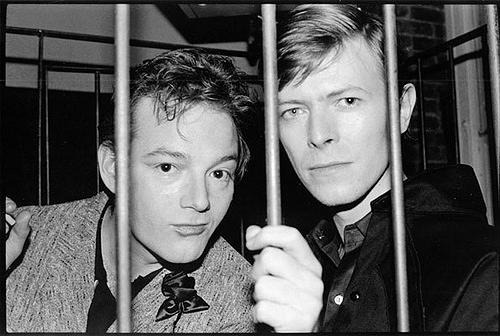
In 2004, a film based on Curtis's life, Superstar in a Housedress, brought Jackie Curtis back to the limelight, exposing some little known facts about the performer to the public. Curtis's influence on a number of people, friends and associates such as Holly Woodlawn, Joe Dallesandro and Penny Arcade, and observers such as David Bowie, is noted in the film.


1952 – California artist Lari Pittman creates visually beautiful and exciting paintings that depict the anxiety attendant on being a gay male in America. They confront the perils and dangers that threaten homosexuality even as they resolutely affirm homosexual love.
Lari Pittman was born in Glendale, California. Pittman spent much of his childhood in the Colombian cities of Cali and Tumace, where his father worked in the lumber industry. An effeminate child, he loved playing with his mother's jewelry. His desire to decorate with baubles received parental support and has deeply influenced his subsequent art.
After studying painting at University of California, Los Angeles from 1970 to 1973, Pittman transferred to the California Institute of Arts. Pittman held his first solo exhibition in 1982 to mixed reactions. His early works, full of obscure references, are purposely made to be difficult for the viewer to decipher.
In 1985, Pittman changed his style as the result of suffering a near fatal attack. One night, he discovered a burglar in his home. When he attempted to scare off the man, he was shot in the stomach. The injury resulted in a colostomy and a long period of recovery. After this harrowing, near death experience, Pittman decided to stop being evasive about his homosexuality and about the thematics of his work. He has since sought to erase the distinction between the private and the public as a means of gay activism.
Pittman's post-1985 imagery is much more open and readable than his earlier imagery. In This Wholesomeness, Beloved and Despised, Continues Regardless (1990), for example, he creates a complex narrative through the use of accessible images. At the center of this canvas is a gay couple making love. However, the decorative elements in the painting are both celebratory and ominous, ranging from an inscribed "69" (a motif he uses in several works) to a noose and a menacing figure wielding a knife. Thus, the work's narrative structure celebrates gay relationships, but also acknowledges the homophobic conditions in which they are experienced. The painting makes an affecting statement about the persistence and perseverance of gay love even in the face of hatred and persecution.

"In This Wholesomeness …
Pittman's paintings consider American identity and history, often incorporating motifs from folk art and popular culture, as in An American Place (1986). Such motifs give his work a cartoon-like quality, with every space packed with imagery and action.

An American Place
The emphasis that Pittman places on queerness has led some critics to describe him as the prince of queer agit-prop art. He has been attacked for being too political because he has dared to address the difficulties of life as a gay man in paintings that grab attention. Indeed, Pittman may be justly regarded as our foremost painter of gay pride.
He lives in Los Angles with his longtime companion, fellow artist Roy Dowell, with whom he sometimes collaborates.


1987 – Jeffery Self is an American actor, writer, and comedian.
Self is a native of Georgia, who grew up in the South. After attending middle school, Self persuaded his parents to let him be homeschooled to avoid dealing in high school with the fact that he was gay.
Self has appeared in many television shows as a recurring, featured or guest actor. He and Cole Escola starred in the sketch comedy series Jeffery & Cole Casserole, which aired on Logo TV for two seasons. He has also appeared in Desperate Housewives, 90210, Hot In Cleveland, Torchwood, Shameless, Difficult People, and as Liz Lemon's cousin Randy Lemon on NBC's 30 Rock. He is the author of two humor books: Fifty Shades Of Gay and Straight People: A Spotters Guide, as well as the young adult novels A Very Very Bad Thing and Drag Teen. He co-wrote, produced, and starred in the indie horror/comedy cult hit You're Killing Me. He was the host of the MTV series, Scream: After Dark, a talk show devoted to deleted scenes and interviews with the cast of the popular MTV horror series Scream. He currently plays Marc Doober on Search Party on TBS.
Self is openly gay. He dated Patrick McDonald of Fire Island for three years and publicly blogged about their breakup. On January 8, 2017, Self and his boyfriend, Augustus Prew, announced their engagement via Instagram. They were married on January 13, 2018 in Culver City, California.


1993 – The Crying Game, a film written and directed by Neil Jordan, portrays the relationship between a transsexual woman and an IRA fighter in London. In 1999, the British Film Institute named it the 26th greatest British film of all time.

2007 – In New Jersey the first same-sex couple, Daniel Gross and Steven Goldstein, held a civil union ceremony when hundreds of Gay couples were granted the same legal rights, if not the title, as married couples as New Jersey became the third state to offer civil unions.


24 notes
·
View notes
Text
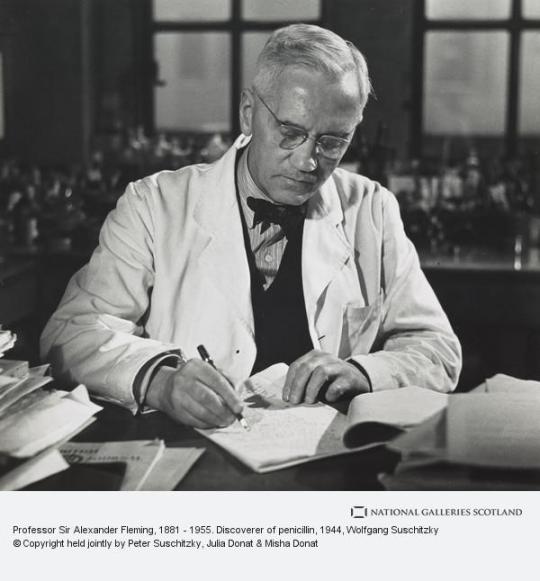


On March 11th 1955 Sir Alexander Fleming died.
The discovery of penicillin came in September 1928, when Fleming was forty-seven. His account of it has been questioned and he did not make a note about it at the time, but according to his recollection he returned from holiday to his cramped little lab to find a pile of petri dishes, on which he had been growing colonies of bacteria, still waiting to be cleaned. He noticed that on one of them a mould had grown which had inhibited the growth of a colony of staphylococcus germs. The mould was Penicillium notatum, commonly found on bread, and Fleming called the liquid from it penicillin.
The thing is Oor Alexander could not find any important practical use for penicillin. He wrote a paper about it in the British Journal of Experimental Pathology, but it attracted no attention. He later pointed out that there had been no trained chemist in the St Mary’s lab. Sir Henry Dale summed up in the Dictionary of National Biography that ‘neither the time when the discovery was made nor, perhaps, the scientific atmosphere of the laboratory in which he worked, was propitious to such further enterprise as its development would have needed.’
t was not for another ten years or so that penicillin’s astonishing properties were established at Oxford by the Australian professor of pathology, Howard Florey, a Jewish refugee from Nazi Germany named Ernst Chain and an Englishman called Norman Heatley. They followed up Fleming’s original paper and turned their Oxford department into a prototype penicillin factory.
The relationship between them and Fleming was distinctly prickly. Almroth Wright wrote to The Times in 1942 claiming the credit for penicillin for Fleming and St Mary’s, and Fleming, Florey and Chain shared the Nobel Prize for Medicine in 1945.The media made Fleming the hero of the saga, partly because the accidental discovery was a good story and partly because Florey had no time for the press while Fleming was pleasant and approachable, your archetypical genial Scot.
A national hero he duly became. So much so that after his death at his home in Chelsea in 1955, his ashes were interred close to Nelson and Wellington in the crypt of St Paul’s Cathedral. Flags flew at half- mast and the cathedral bulged with academic and medical grandees, ambassadors, representatives of societies, staff and students from the hospital, as well as personal friends. A memorial plaque was unveiled in the crypt the following year and Fleming’s original lab where penicillin was discovered is preserved in the museum to him at St Mary’s.
16 notes
·
View notes
Text


Reconstructed Manzanar guard tower.
Soul Consoling Tower at Manzanar cemetery.
Manzanar, California. 17 Nov 2019.
Between March 1942 and January 1945, 11,070 Japanese Americans were incarcerated in a concentration camp in Manzanar, California, one of ten such camps built across the western and central United States. Many of the concentration camps were built on unceded indigenous land, including Manzanar, which is located in Payahǖǖnadǖ / Owens Valley, within the traditional territory of the Mono people. Conditions at Manzanar were very harsh, with inadequate provisions and facilities unsuited for the high desert climate. At least 135 people died while incarcerated there.
The guard tower was reconstructed for educational purposes in 2005. The cemetery marker, Soul Consoling Tower, was built in 1943 by Ryozo Kado, a detained stonemason. Both towers now stand and testify to a crime against humanity committed by the United States.
25 notes
·
View notes
Text
Timeline of CATFA in images Condensed.



Original timeline here.
Sources:
CATFA
CATFA Deleted Scene
CATWS
CATWS Deleted Scene
Avengers Deleted Scene
Marvel Instagram
Marvel Studios’ The Marvel Cinematic Universe: An Official Timeline
#March 1942 - March 1945#long post#historically accurate stucky tag#steve rogers#steve meta#catfa#catfa meta#mcu meta#ref#meta#626 days#dat's me#sources under cut#timeline#my meta
21 notes
·
View notes
Text



Engine room answers orders from the bridge to increase speed aboard USS NEW YORK (BB-34).
The first two photos were taken by Frank Scherschel of Life Magazine. Identified by Peter DeForest.
Date: 1942-1945
LIFE Magazine Archives: 1155772549, 1155773531
United States Navy, "The history of the U.S.S. New York, BB-34" (1945). World War Regimental Histories. 162. https://digicom.bpl.lib.me.us/ww_reg_his/162
#USS New York (BB-34)#USS New York#new york class#dreadnought#battleship#March#June#1942#1945#world war 2#world war ii#world war two#WW2#WWII#WWII History#history#military history#military#united states navy#us navy#navy#usn#u.s. navy#Atlantic Ocean#convoy#my post
37 notes
·
View notes
Text
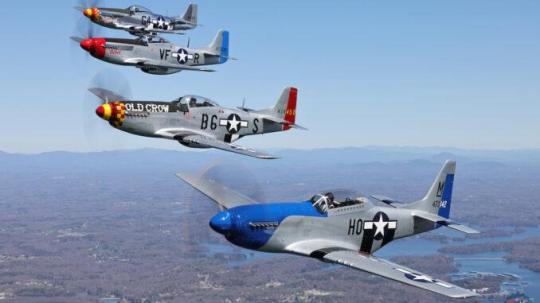
A Flight of Four Mustangs Celebrates WWII Fighter Pilot’s 100th Birthday
March 20, 2024 Vintage Aviation News Warbirds News 0
The formation of four Mustangs flying over Lake Lanier, north of Atlanta.
United Fuel Cells
Mission accomplished! On Tuesday, March 19, World War II pilot Paul Crawford fulfilled his dream of flying in a P-51 Mustang like the one he commanded 79 years ago in China, where he flew 29 missions until he was shot down in 1945. Now 100, Buckhead resident Crawford was delighted when the Liberty Foundation and Inspire Aviation Foundation took him up in a TF-51D on a perfect blue-sky day for flying.
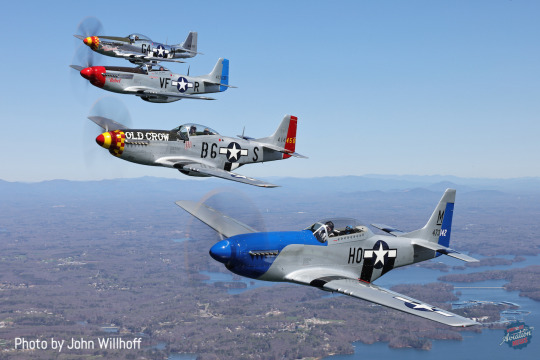
TF-51 “E Pluribus Unum” piloted by owner Bob Bull with Paul Crawford in the back leads the formation over Lake Lanier. The camera ship was a Bonanza piloted by long time Liberty Foundation’s pilot Cullen Underwood.
For the occasion, four P-51 Mustangs landed at the Dekalb-Peachtree Airport and parked at Atlantic Aviation, the FBO that supported this unique event. Mr. Crawford lovingly touched the nose and wing of one of the Mustangs when he first walked up to it, reuniting after a 79-year separation. LtCol Ray Fowler, Liberty Foundation Chief Pilot, and pilot Bob Bull helped Crawford into the back seat of the TF-51 and gave him an exhilarating 30-minute ride.
The organizers envisioned the participation of only one P-51, but a quick round of calls sparked the interest of other owners who enthusiastically decided to participate in the event. Bob Bull, Steve Maher, and Rodney Allison flew their Mustangs to Atlanta bringing the total number to four:

P-51D “Old Crow” (N451MG) – Pilot Ray Fowler – Liberty Foundation P-51D “Rebel” (N3BB) – Pilot Rodney Allison P-51 “E Pluribus Unum” (N351B) – Pilot Bob Bull – P-51 “Ain’t Missbehavin” (N51K) – Pilot Steve Maher
The Japanese attacked Pearl Harbor and Paul graduated six months later, during which time Congress passed the law to draft 18-year-olds. “I knew that I was going to be drafted so I went to Atlanta to talk with the Army Air Corps [sic] and the Navy about flying,” shared Mr. Crawford. ”The Navy said they would accept me for flight training but wanted me to go right then to their Great Lakes training center. The Air Corps told me they would accept me, but to go on back to college and they would notify me when to report.” said Crawford. Paul went back to Americus, entered Georgia Southwestern College, and shortly thereafter he received his draft notice to report to Fort McPherson in Atlanta on January 2, 1942.
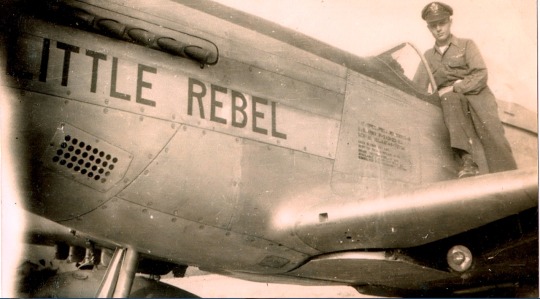
Paul Crawford in his P-51 ‘Little Rebel’ ( photo by Paul Crawford Collection)
Paul had an older brother, Tim, who had gone into the Air Corps before Pearl Harbor and was flying B-26s, a medium bomber. He ended up flying combat in the B-17 Flying Fortress out of North Africa. The older brother influenced Paul’s choice, convincing him that the Air Corps had better aircraft, “I thought the water was, as they say, too deep and too wide to swim!” said Mr. Crawford.
With about 100 hours on the P-51 and 250-275 hours total, Mr. Crawford was sent off to Chengtu, China assigned to the 311th Fighter Group, 529th Fighter Squadron protecting the B-29 bases. As these B-29s transferred to the Pacific Theater, his squadron was transferred to Hsian headed for combat. At the time, Mr. Crawford was estimated to have only accumulated another 60 hours of flying time.
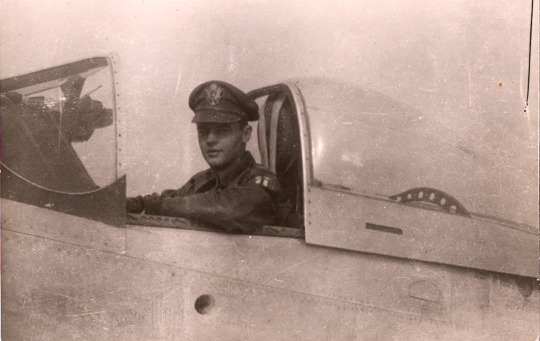
On his 29th mission, Mr. Crawford was shot down by ground fire while strafing a small railroad facility. After getting hit, he bailed out and was picked up by Chinese Communist guerillas. A few days earlier one of his housemates had been shot down and captured by the Japanese who cut his head off and put it up on a gate post. After a 200-mile-long walk, chased by the Japanese a couple of times, yet still evading capture, Mr. Crawford ended up at a compound owned by a wealthy family. A few miles from the compound was an airstrip where the OSS (U.S. Office of Strategic Services) brought downed airmen out. After the flight, Mr. Crawford talked about his experience: “When I recall my time in World War II, I always start by saying, I was not a hero! I was just there! That is not false modesty because it is the way I have always felt. I flew the P-51 Mustang.”

Mr. Crawford who has time in P-40, P-47, A-24, and P-51C, believes that the P-51 was the best fighter plane of its day. “There’s nothing in the world like that airplane,” Crawford said. “I loved doing the maneuvers again.” Paul Crawford was surrounded by several friends, his son-in-law, Tommy, and dozens of Liberty Foundation and Inspire Aviation Foundation members eager to have their pictures taken with him, shake his hand, and thank him for his service.

Ezoic
After serving in WWII, Paul Crawford finished college at Georgia Tech with a degree in Industrial Management. That’s also where he met his wife, Jean. They had a daughter and were married for sixty-one years when Jean passed away. Paul worked in the paper industry and for the U.S. Envelope Company until he retired in 1988. Paul currently lives in Atlanta and participates in aviation and historical WWII events.
This special event was made possible thanks to the support of Bob Bull, Ray Fowler Chief Pilot of The Liberty Foundation, Steve Maher, Atlantic Aviation FBO, Cullen Underwood with Vintage Flights, and Inspire Aviation Foundation.
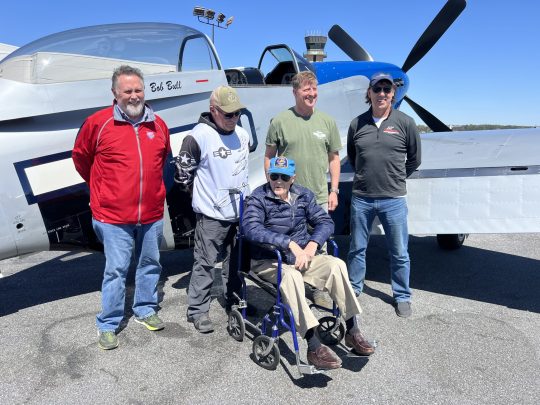
Paul Crawford after the successful flight with (L to R), Cullen Underwood (Camera ship pilot), Bob Bull, Ray Fowler, and Rodney Allison.
16 notes
·
View notes
Text
Erich Hartmann (1922 - 1993)
The most successful fighter pilot in history. In the span of 3 years, Erich "Bubi" Hartmann shot down 352 enemy aircraft.

Erich spend a part of his childhood in China, when things got too politically dangerous, his family moved back to Germany. His mother was one of the first women to pursue flying on glider planes and she often took Erich with him, igniting his love for flying.
After graduating school in 1940, he immediately joined the Luftwaffe and started training as a fighter pilot. In October 1942 he was sent to the Eastern Front, joining the war. Young and impulsive as he was, he didn´t stick to the rules at his first enemy encounter, resulting in a crashed plane. He was assigned as Rottenflieger of Walter Krupinski, another young but already experienced and successful fighter pilot who managed to teach Erich that working as a team is crucial for success and survival.
Within a year he shot down 90 victories, before being shot down himself, but managing to escape Soviet imprisonment.
Im March 1944 he shot down his 200th victory, by August his 300th.
In late 1944 he was pulled from the Eastern Front to train on the revolutionary new jet fighter Me-262, but in March 1945 he returned to his Geschwader. He declined Adolf Gallands offer to joing JV 44.
On the day of the capitulation, 8th May 1945, he shot down his final victory, number 352.
He had the chance to espace to southern Germany but he refused to leave his comrades and the fleeing civilians behind. They started towards the German border on foot and surrendered themselves to US soldiers, but where handed over to the Russians. [There is an interesting comparison to Hans Ulrich Rudel (the most successful Stuka pilot) who also surrendered to Americans who were also supposed to hand him over to the Soviets but refused.]
Erich Hartmann, just 23 years old at the time, was sentenced to 20 years of hard labour under the accusation of war crimes (these "crimes" entailing destroying russian airplanes).
Not being allowed a proper trial, there was little he could do to defend himself. He was shifted around to several labour camps (gulags).
During the endless interogations, the Russians tried to get all information about the Me-262, but Hartmann didn´t cooperate. In order to break him, they tried to extort him by not giving him the letters his wife, Ursula, wrote him. She faithfully wrote him everyday. In one of those letters, Hartmann learned that his son had died.
But he did not break and he never lost hope.
After more than 10 years, Erich Hartmann was one of the last PoWs to return to Germany, to his wife.
He joined the Luftwaffe in 1956, not because he truly wanted to but because he felt like he had no other option. Erich had always wanted to become a doctor like his brother but all he knew was being a soldier, a pilot.

After his death he was cleared of all war crime accussations.
8 notes
·
View notes
Text
Erich Hartmann

This is Erich Hartmann, the flying ace with the highest number of kills in history, timeline:
1922: He was born on 19 April 1922 in Weissach, near Württemberg.
1925: Given his father's difficulty in practicing medicine in Germany, the family moved to China.
1933: Adolf Hitler became Chancellor of Germany.
1936: At fourteen he obtained his glider pilot's license.
1937: At the age of fifteen he became an instructor in the Hitler Youth.
1939: WWII began.
1940: He joined the Luftwaffe.
1940: He began military flight training in East Prussia.
1942: He went to Zerbst-Anhalt.
1942: He graduated as a lieutenant in March and later attended advanced air artillery school.
1942: He made his first mission.
1942: He carried out his first aerial shootdown, a Shturmovik IL-2,
1942: He was decorated with the Iron Cross second class.
1943: Gunther Rall appointed him commander of the 9th Squadron.
1943: He received the Iron Cross first class.
1943: He received the Luftwaffe honor cup.
1944: He achieved three hundred aerial victories.
1944: He received the Knight's Cross with oak leaves, swords and diamonds.
1944: He married Ursula Pätsch.
1944: He was the fourth pilot in history to reach 250 planes shot down
1945: flying on a Bf 109G-14 to locate Soviet forces, he spotted a Yak-11 or Yak-9 fighter, which was performing aerobatics, and shot it down. It was his last victory, number 352, and also the last of the Luftwaffe during the conflict
1945: World War II ended.
1949: During his imprisonment, he was accused by the Soviets of war crimes and sentenced to twenty-five years of forced labor on charges of "sabotaging the Soviet war effort".
1955: He was freed and repatriated.
1956: He joined the newly formed Luftwaffe.
1970: He took his leave.
1971-74: As a civilian he was a flight instructor in Hangelar, near Bonn, avoiding public appearances as much as possible.
1993: He died on September 20th.
1997: Russia acquitted him of war crimes charges.
if you don't like it go with your life:
Sources:
Erich Hartmann's final interview
Wikipedia: Erich Hartmann
❗ I DON'T SUPPORT NAZISM, FASCISM OR ZIONISM IN ANY WAY, THIS IS AN EDUCATIONAL POST❗
96 notes
·
View notes